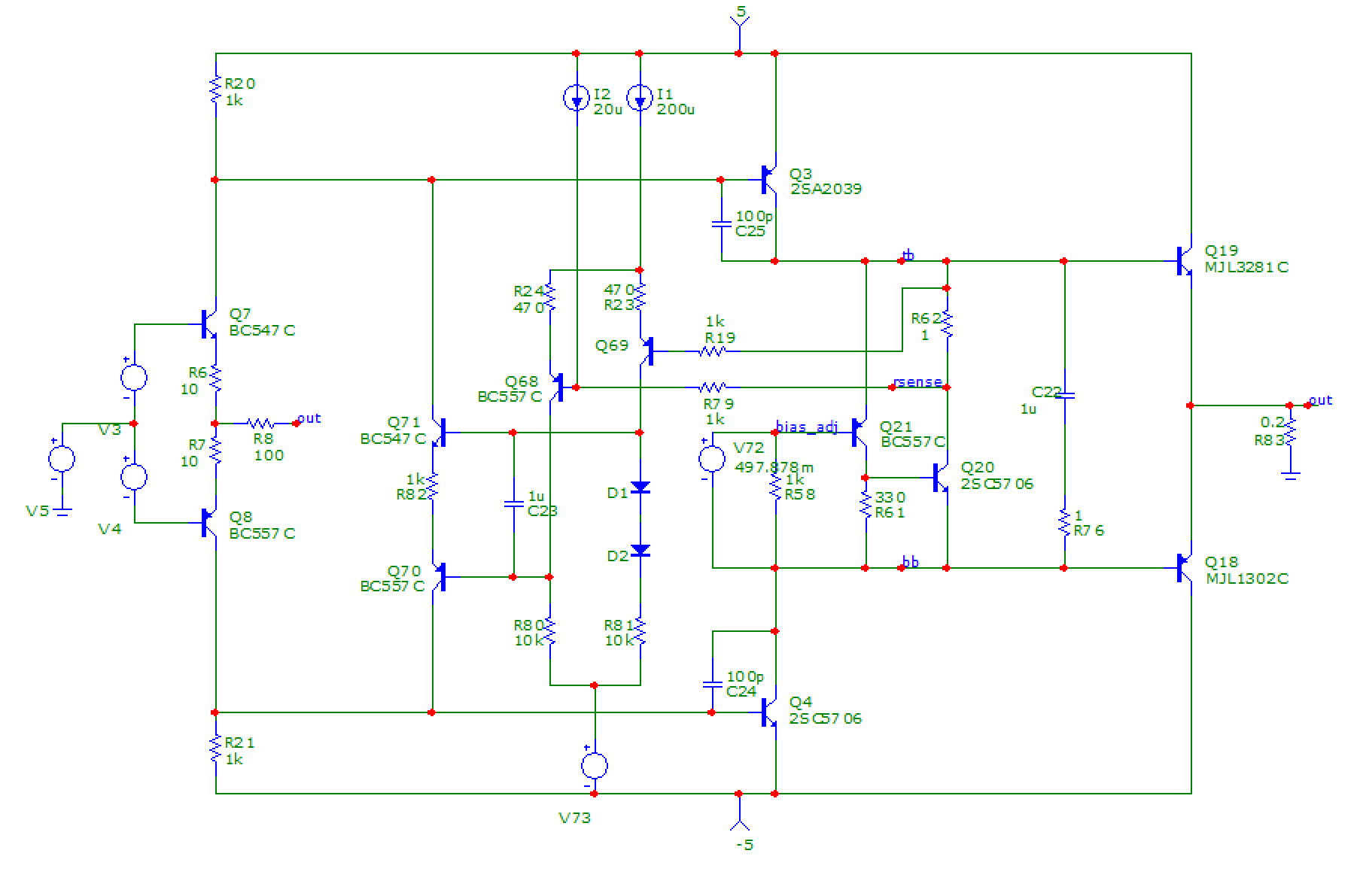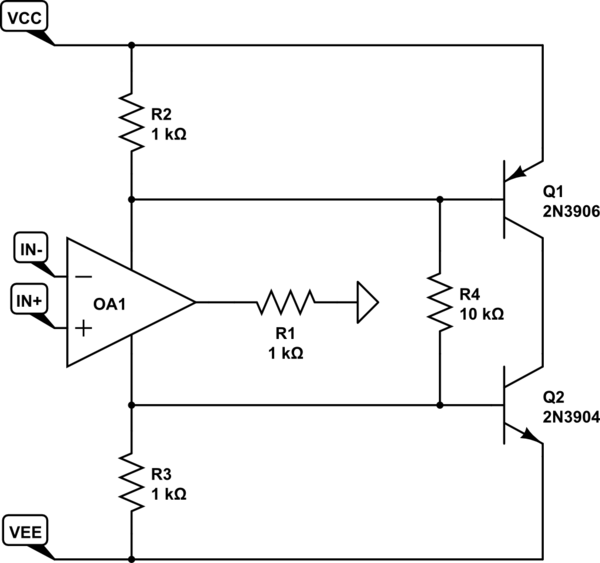For a personal project, I'd like to make a discrete current feedback opamp. Here's a simplified schematic:
The question is about how to bias Q3/Q4.
For a nice class-AB output, the sum of both Vbe's should be constant. In a common collector output stage (like Q9/Q10), that's easy enough since both Vbes are on top of each other, all that's needed is a bias voltage generator that follows their temperature drift.
But in the common emitter configuration (Q3/Q4), these Vbe's are quite far away from each other. How to keep their sum constant? The usual solution is to put emitter resistors and run them at high bias current, but that means high idle dissipation and low gain.
There are plenty of integrated rail to rail output opamps. If I remove Q9/Q10 and squint a little, the schematic looks very much like a rail to rail output current feedback opamp.
So how do they do it? How to bias Q3/Q4 so they run in class-AB without the current running away?
Usually datasheets show a magic box, they're not telling about the secret sauce inside...





